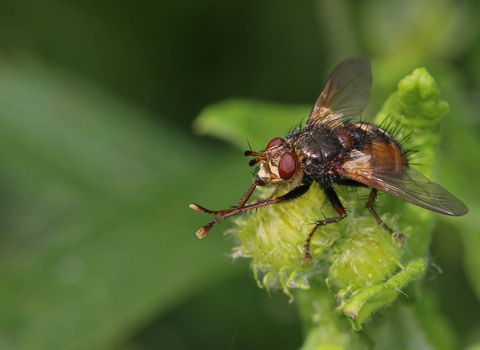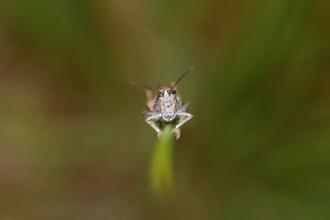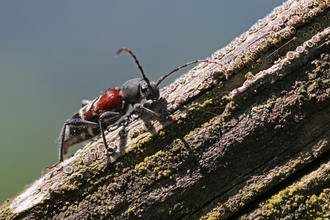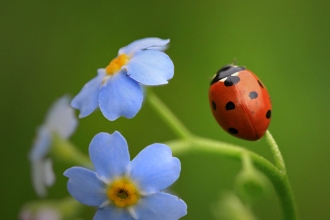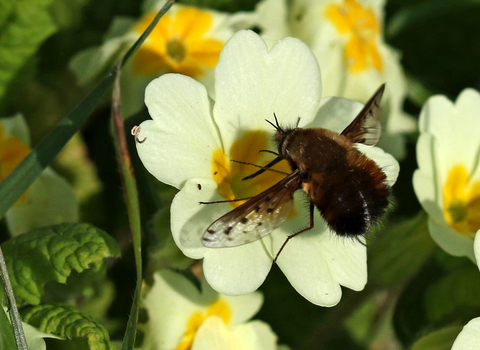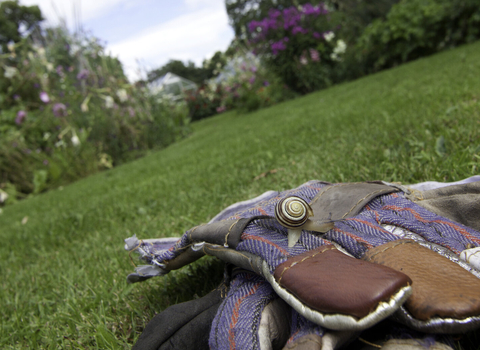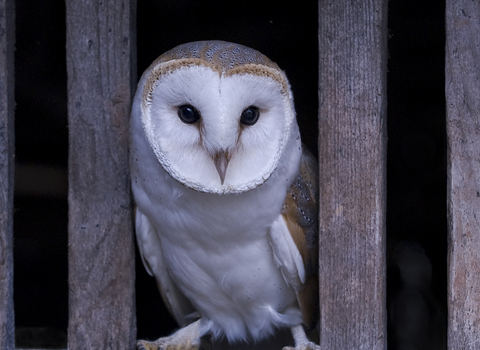We give flies a bit of a hard time. Most people consider them to be the nuisances that flit about the house on a warm sunny day when the windows have been left open but there’s much more to them than that. Flies play important roles from pollinating our plants to controlling numbers of crop pests and helping carrion and droppings to decompose, not to mention the fact that they’re also food for other wildlife.
Diptera (meaning two-wings) are made up of many different families so we’ve asked local fly expert Mick Blythe pick out some of the most common, the most unusual and the most fascinating...
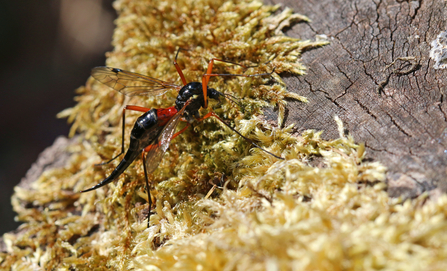
Tanyptera atrata by Wendy Carter
Tanyptera atrata
The maggot of this cranefly spends its life burrowing in dead wood, particularly the rotting stumps of birch trees. The female is an impressive insect, glossy red and black with a most intimidating ovipositor. She is harmless; her warning colouration a bluff. As she emerges from her pupal case she rapidly attracts males, which have comb-branched antennae that is typical of insects that detect pheromones produced by the other sex.
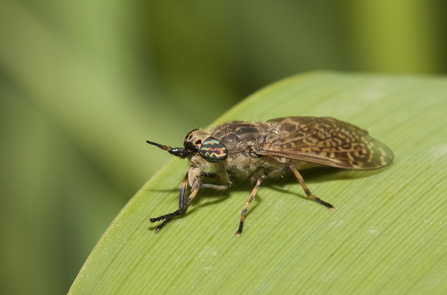
Notch-horned cleg by Rosemary Winnall
Notch-horned cleg Haematopota pluvialis
We usually encounter the female as she approaches with stealthy flight in search of a nourishing meal of human blood, which is required for the development of her family. Her eyes are extremely efficient and strikingly beautiful. She usually settles on her victim and searches for an unprotected area before inserting her beak and injecting anticoagulant; bare hands are particularly favoured. The males may be found in high level swarms. The larvae are predators, feeding on invertebrates in the soil.
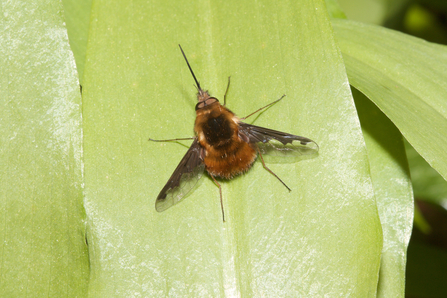
Dark-edged bee-fly by Rosemary Winnall
Dark-edged bee-fly Bombylius major
The darting hovering flight of the bee-fly is a common sight in spring sunshine but its slender probing proboscis probably makes it an inefficient pollinator. The female weights or disguises her tiny eggs with stored sand grains before flicking them individually onto patches of bare soil. The newly hatched maggot seeks out and enters the nesting burrow of a solitary bee and attaches itself to the bee grub, waiting until the grub is ready to pupate before beginning to feed on it.
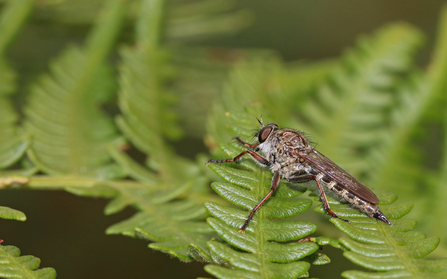
Kite-tailed robberfly by Wendy Carter
Kite-tailed robberfly Machimus atricapillus
This common robberfly is a fierce predator of other insects. It is a warmth lover, usually seen basking sideways to expose more of its body surface to the sunshine. At the same time, however, it is ready to dash after passing prey; most of its victims are other flies. The prey is gripped in mid air by the powerful spiny legs and the beak injects a fast-acting lethal toxin. The larvae are found in the soil and may be predators of beetle grubs.
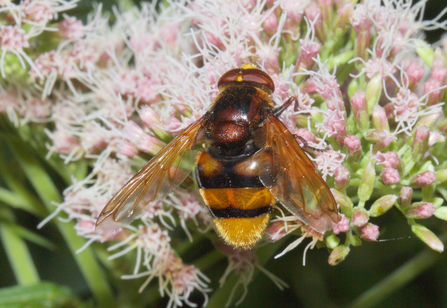
Volucella zonaria by Rosemary Winnall
Volucella zonaria
One of our largest and most spectacular hoverflies, having colonised Britain during the 1940s and extended its range northwards ever since, now reaching Cheshire. The adult is usually seen nectaring on flowers, sometimes in gardens, from May onwards. The maggots live in the nest of colonial wasps or hornets feeding on nest debris; they seem to do little harm to the wasps or their larvae. Perhaps the adult’s distinctly hornet-like appearance provides protection for the female during egg laying.
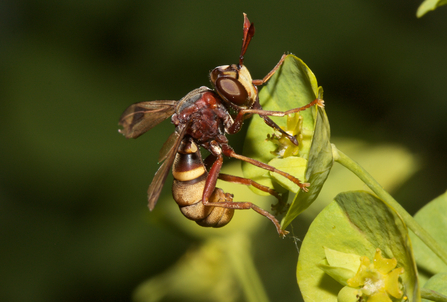
Conops vesicularis by Rosemary Winnall
Hornet grabber Conops vesicularis
The wasp-like Conops flies are mostly parasitoids of bumblebees. The bee is seized in the fly’s powerful legs, often in mid air, the plates of its abdomen are levered apart and an egg is inserted. The hatched maggot burrows into the bumblebee, feeds on its internal organs and eventually kills it. Conops vesicularis is the largest of the UK species and is usually seen nectaring on umbelliferous flowers. Its host is unknown though the hornet is a possibility.
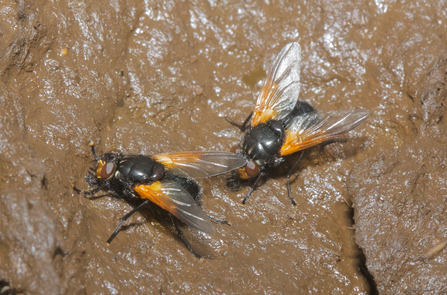
Noon flies by Rosemary Winnall
Noon fly Mesembrina meridiana
This attractive fly is a familiar sight resting in the sunshine or nectaring on hogweed. It is often called the noon fly because it can be found basking during the heat of the day when most other species have retired to the shade. The female lays large eggs singly at one-two day intervals, each in a different fresh cowpat. The large maggot is a ferocious predator, feeding not only on the substance of the cowpat but also on any other organism it encounters.
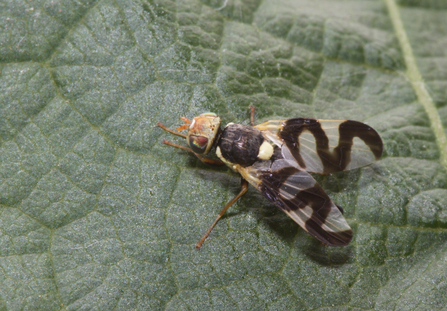
Urophora cardui by Rosemary Winnall
Urophora cardui
This pretty little “picture wing” fly is commonly found over the southern half of England and Wales where it results in a large, many-chambered gall in creeping thistle. The eggs are laid in clusters in leaf buds in June-July and the hatching maggots form a colonial gall inside the upper stem. The maggots feed through the summer and overwinter in the woody gall that has usually fallen to the ground with the dead thistle stem.
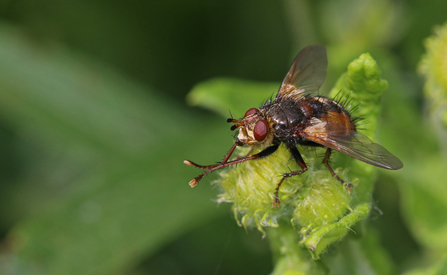
Tachina fera by Wendy Carter
Tachina fera
This bristly fly is usually seen nectaring on flowers from May onwards. Its maggot is a parasitoid of moth caterpillars. The eggs are laid singly on oak leaves and hatch almost immediately; the tiny armoured maggot rests flat upon the leaf. When it detects the movements of a nearby caterpillar, it rears up onto its hind end and begins casting about in an attempt to make contact. If successful, it burrows into the caterpillar and grows inside it, feeding at first on its blood and fat. Later it will devour the vital organs and kill its host.

